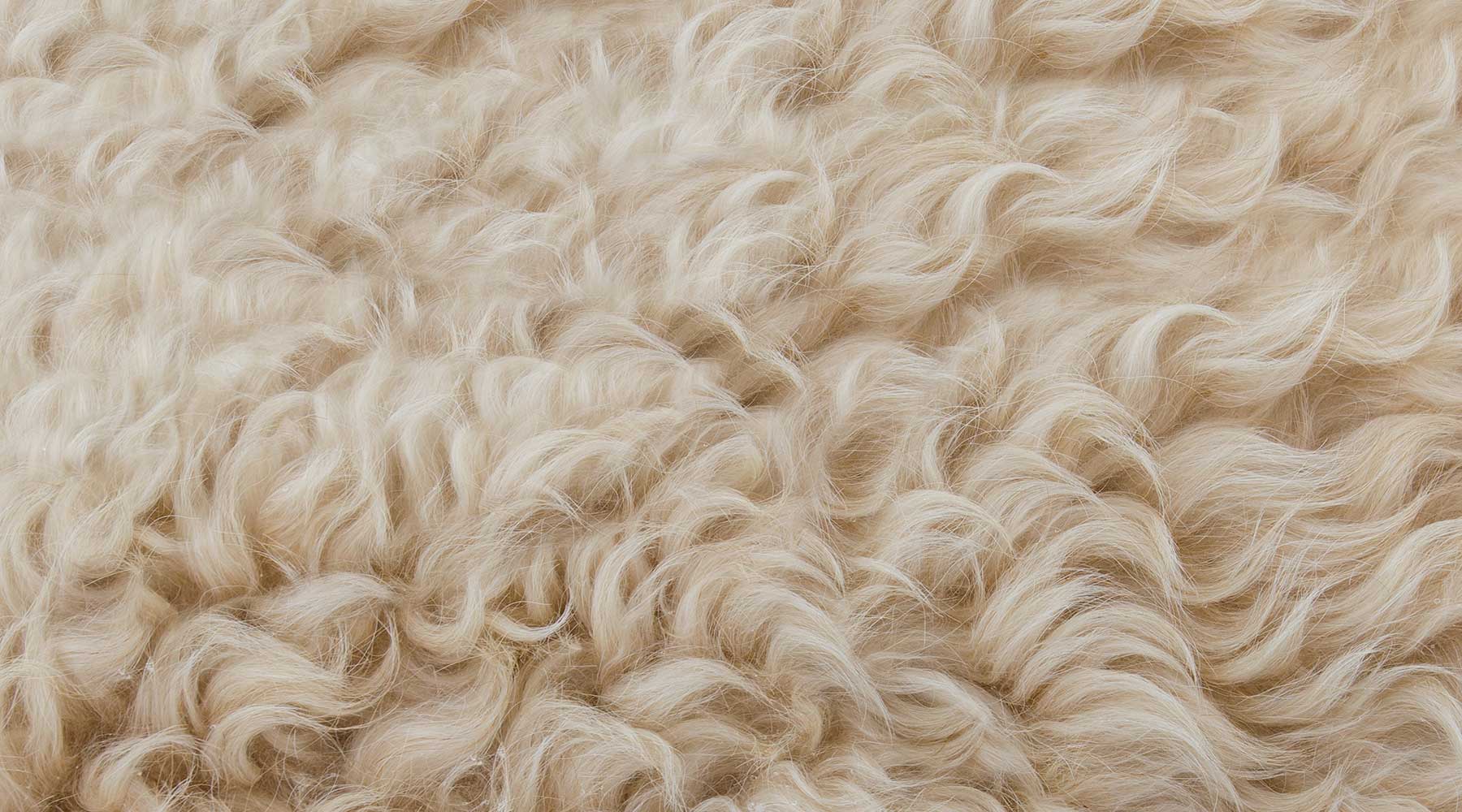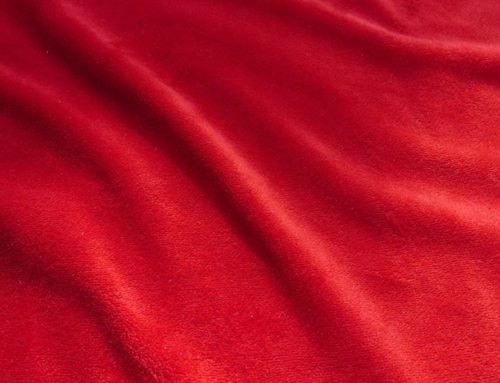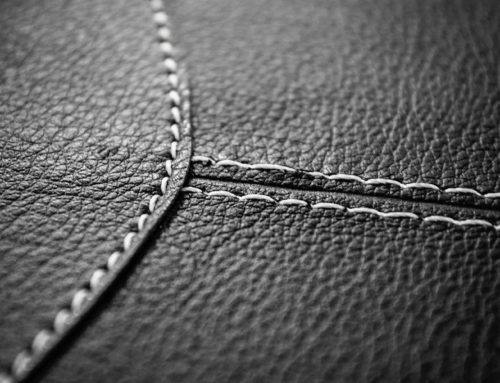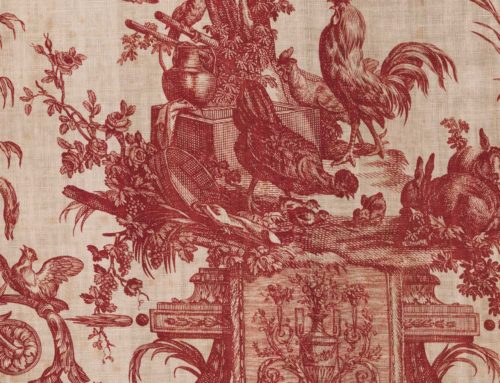Today we begin a new series of blogposts covering the development of fabrics for use in upholstery, the use of different fibres, and the development of different weaves and designs. Blogpost 1 in the series covers the use of natural fibres that are used in upholstery fabrics, outlined below:
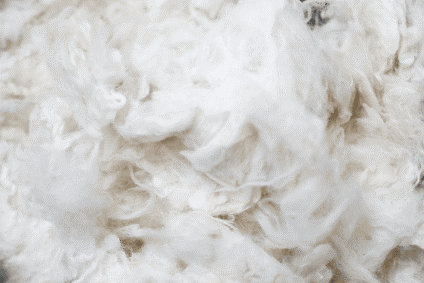 Wool:
Wool:
Wool as a fibre is obtained from animals, mostly from sheep and goats. It is obtained by shearing the animal. Wool fibres have a unique surface structure of overlapping scales (like fish). This allows fibres to slip over one another easily in one direction but not the other, giving wool the ability to felt.
Wool fibres contain a series of cells that provide air spaces, giving wool its thermal insulation value. The inner structure also provides a natural ‘crimp’ unique to wool fibres. Wool is effective in reducing heat transfer. It is easily dyed and the fibres can be stretched up to 25 to 30 percent before breaking.
The fibres have a tough exterior, protecting the fibres from damage. The cells have a waxy coating, making wool naturally water-repellent, but still allowing absorption of water vapour. The water-repellent surface reduces staining because spills don’t soak in as easily.
Wool and wool blend fabrics offer good resistance to pilling, fading, wrinkling and soiling. The above characteristics show that wool and wool-blended fabrics are an excellent choice for general upholstery purposes, as they are strong, durable, will stretch and wool is both heat and stain resistant.
 Cotton:
Cotton:
Cotton is a natural fibre that comes from the seedpod of the cotton plant. The fibre is most often spun into yarn or thread and used to make a soft, breathable textile. Cotton fabrics can be extremely durable and resistant to abrasion. Cotton accepts many dyes, is usually washable, and is resistant to high temperatures.
It provides good resistance to wear, fading and pilling, but is less resistant to soiling and wrinkling, although blending with other fibres can often compensate for these weaknesses for use in general upholstery. Durability and suitability for use will depend on the weave and finish of the fabric. Cotton blends tend to be sturdier fabrics which can be useful for everyday use if treated with a stain-resistant finish.
 Linen:
Linen:
Linen is a fabric made from the fibres of the ‘flax’ plant. Linen as a fabric has greater ‘breathability’ and good airflow due to the smooth, large fibres which mean that when it is woven there tends to be large gaps between the yarn, creating the airflow.
Although linen fabric is cool to the touch; is a good heat conductor and the fibres are resistant to abrasion, they don’t stretch, so due to the low elasticity, linen fabric doesn’t fold well, and can wrinkle easily. These characteristics mean that although it is a strong and durable fibre, 100% linen fabric does not lend itself well to general upholstery, although as part of a blended fabric it can work well.
 Silk:
Silk:
Silk is a natural protein fibre, and although produced by many insects, only the silk of moth caterpillars used to produce silk fabric. 100% silk is a very strong, smooth fabric that dyes well and can be embroidered, although it reacts poorly to sunlight which can over time damage the fibres and fade dyes.
Silk fibres are inherently fire retardant, but any silk fabrics can be damaged easily by heat or liquids, making them susceptible to staining. This makes 100% silk fabric a poor choice for general upholstery, although it may lend itself well to soft furnishings, in particular curtains in adult bedrooms and living/dining rooms (not kitchens/bathrooms due to staining and potential condensation).
Cotton-backed silk blends can be used for general upholstery, as this type of fabric is more durable and will last longer.
 Modal:
Modal:
A fibre produced from ‘Rayon’, which is manufactured from naturally-occuring polymers, harvested primarily from wood pulp. All fibres produced from rayon are considered natural rather than synthetic fibres for fire regulation purposes. Modal is produced primarily from beechwood fibres which are very strong, and thus the fabric does not pill, shrink or crease easily, takes dye well and does not fade.
Used as a cotton substitute, its greater water absorbency means that instead of shrinking, modal actually stretches over time. As a result (along with Viscose, below), a 100% modal fabric would not be considered appropriate for use in general upholstery, although polyester and cotton-blended fabrics with a small % of modal may be deemed to be appropriate for use.
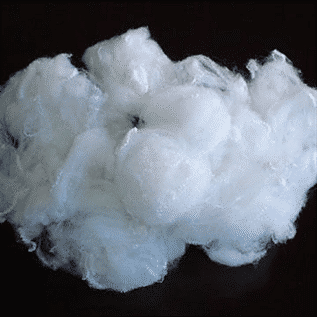 Viscose:
Viscose:
Sometimes known as ‘Rayon’, Viscose is a semi-synthetic fibre and is extremely durable, however it can wrinkle. Originally known as ‘artificial silk’, viscose is actually a type of rayon, even though ‘viscose’, ‘rayon’, and ‘viscose rayon’ are often used interchangeably. Modal (see above), along with viscose, are also considered types of rayon. Viscose is strong and soft but highly absorbent, meaning it retains colours well, although it can shrink and wrinkle as well as discolour and mark easily. It deteriorates with exposure to light and the fibres can weaken when wet. Due to the fact it is prone to stretching and bagging, 100% viscose fabrics are not generally recommended for use in upholstery, although some woven fabrics with viscose as part of the blend can be considered safe for use.


